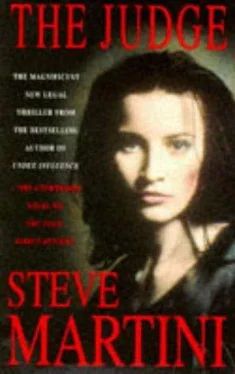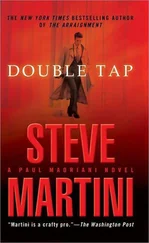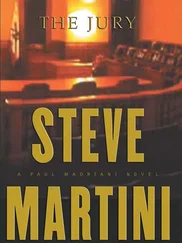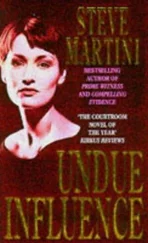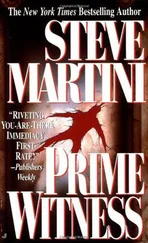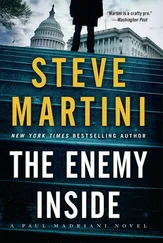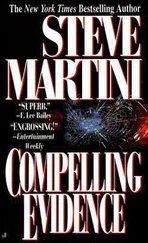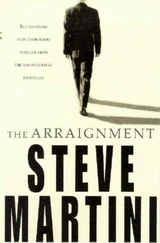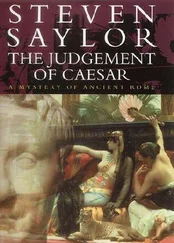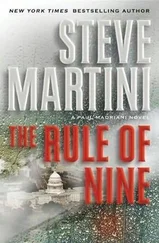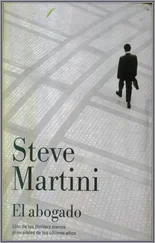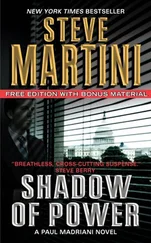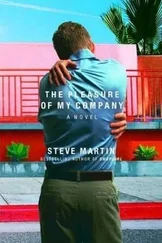Steve Martini - The Judge
Здесь есть возможность читать онлайн «Steve Martini - The Judge» весь текст электронной книги совершенно бесплатно (целиком полную версию без сокращений). В некоторых случаях можно слушать аудио, скачать через торрент в формате fb2 и присутствует краткое содержание. Год выпуска: 2011, Издательство: Penguin Group US, Жанр: Триллер, на английском языке. Описание произведения, (предисловие) а так же отзывы посетителей доступны на портале библиотеки ЛибКат.
- Название:The Judge
- Автор:
- Издательство:Penguin Group US
- Жанр:
- Год:2011
- ISBN:нет данных
- Рейтинг книги:4 / 5. Голосов: 1
-
Избранное:Добавить в избранное
- Отзывы:
-
Ваша оценка:
- 80
- 1
- 2
- 3
- 4
- 5
The Judge: краткое содержание, описание и аннотация
Предлагаем к чтению аннотацию, описание, краткое содержание или предисловие (зависит от того, что написал сам автор книги «The Judge»). Если вы не нашли необходимую информацию о книге — напишите в комментариях, мы постараемся отыскать её.
The Judge — читать онлайн бесплатно полную книгу (весь текст) целиком
Ниже представлен текст книги, разбитый по страницам. Система сохранения места последней прочитанной страницы, позволяет с удобством читать онлайн бесплатно книгу «The Judge», без необходимости каждый раз заново искать на чём Вы остановились. Поставьте закладку, и сможете в любой момент перейти на страницу, на которой закончили чтение.
Интервал:
Закладка:
“You think I have not been forthcoming?” he says. “That I’m withholding something?”
“I simply don’t want any surprises.”
He raises a palm out to me. “I swear to you. I was not at that apartment that afternoon, that evening, or any other time. I have never been there in my life,” he says. “On my mother’s grave.” He makes a gesture crossing his heart as he says this.
“Then what do you make of the note?” I ask him.
“The same as you,” he tells me. “Probably a reminder that the girl penned to herself for a meeting with others. This would not be unusual,” he says. “The prosecutor in such a case would want to talk to her. I was a notable public official. True, it may have only been a misdemeanor, but still an important case. The police would want to talk to her to ensure that she gets her story straight. Especially given what happened here.” He thumps the table for emphasis.
When I don’t pick up on this immediately, he puts his sandwich down.
“Don’t forget they framed me,” he says. “They would of course be nervous that she might slip on the stand, say something that did not jibe. An inconsistent statement that might undo the entire case could be more than embarrassing. It could have incriminating implications for them.”
“But why just your name on the note?” I ask.
“Perhaps she was in the habit of making such cryptic entries on her calendar. Who knows?”
I have in fact checked Hall’s calendar for the day she met with Lenore in the D.A.’s office, the only date on which I know there was a meeting involving the case. She did make a notation. It referred not to “Acosta” but to Kline, by name, with the time set for their meeting. There were several other similar entries, all of them very specific, including two with the investigating Vice cops. I am only happy that Kline did not find these, and mention them to the jury to undercut my argument. But it begs the question why, on the day she died, did she use Acosta’s name?
In common parlance we call it a “death rattle.” It is one of those terms that through use has passed into the realm of fantasy so that many no longer believe it is an actual biological phenomenon. In fact, it is. Forensics experts tell us that the death rattle is the result of involuntary spasms in the vocal box brought on by increased acidity in the blood following death. The noise itself is alternately described as a loud bark or whooping rasp emitted by a victim sometime after death.
It is just that question, the time of Brittany Hall’s death rattle, that is in issue here today.
On the stand is Dr. Simon Angelo, the Capital County coroner. He is a man in his forties, slight of build, and bald, with a fringe of graying hair that rings his head like clouds with their tops sheared. His face is angular and narrow, sharp features including a cleft chin and deep-set dark eyes. To any defense lawyer in this town, he is the doctor to the devil.
He has now cast in stone the state’s explanation of how the witness, Brittany Hall’s upstairs neighbor, heard the victim shout sometime between seven-thirty and eight on the night she died. For Kline this has been a problem, the need to close the gap between the alleged four-thirty meeting on Hall’s calendar with Acosta, and her cry sometime after seven-thirty.
Angelo has been most accommodating in helping the prosecution avoid any apparent contradiction in its timeline. His answer is simple: the later cry was Hall emitting a loud, singular death rattle.
“So, Dr. Angelo, in your expert medical opinion,” says Kline, “it is conceivable that it could take a considerable length of time for the acid level to build in the blood sufficient for this sound, the death rattle as you call it, to occur?”
“It’s possible,” says Angelo. “It would vary from case to case.”
“But it could take as long as three hours?”
“I would say as long as two,” he says.
“So if the killer came to the victim’s apartment at, say, four-thirty in the afternoon, and they talked, maybe argued, and say sometime around five-thirty they struggled and the victim suffered a fatal blow, it is conceivable that the death rattle might not be heard until, say, sometime after seven-thirty that evening?”
“It’s possible.”
Kline then turns his attention to the time of death, something that Angelo says can be fixed only within broad parameters.
“How broad?” says Kline.
“According to my best estimate, death occurred sometime after three-thirty in the afternoon, but before nine-thirty that evening.”
“Nothing more precise than that?”
“No. Unfortunately there was no known contact by the victim with any person other than the killer during that time frame, so it becomes very difficult to narrow the estimate.”
Apparently to the little girl Kimberly, time is a concept that is meaningless. It is a measure of how little they have gotten from her that she has been unable to help them even on this.
They talk about scientific methods, eye fluids, postmortem temperature probes of the liver, and examination of stomach contents, all of which are helpful but not definitive in determining the time of death.
“The fact that the body was found outside, exposed to the elements, and remained there for several hours during the early investigation makes the estimate that much more difficult,” says the doctor.
Kline then turns his attention to the main event with this witness, the death scene photographs and pictures of the autopsy. These have been culled from more than seventy prints to twenty-three, most of them deadly in their probable impact on the jury. We have bickered behind closed doors for two days over what the jury may see, my only victories coming when I was able to exclude some photographs on grounds that they were redundant, cumulative evidence that the court excluded.
“Dr. Angelo, I want to show you a photograph and ask if you can identify it.” Kline has numbered these in order and given a set to us as well as to the judge. Another set is lined up, in three tiers of columns, on an easel in front of the jury box, each photo covered by a sheet of paper to be removed as the photo is moved into evidence.
Angelo takes the print from Kline and studies it briefly.
“Yes, that is a photograph taken in the trash bin at my direction evidencing the position and location in which the body was discovered.”
Hall’s lifeless body had twisted into a hideous configuration when it was dumped into the bin. Like some rag doll, she is curved at the small of the back so that both her face and behind are toward the camera. One hip is thrust up by a pile of plastic garbage bags. Portions of her partially nude form appear to escape from the edges of the blanket in which she was wrapped.
Kline moves to the next shot. This time the blanket has been removed, revealing the entire body, partially clad, except for a portion of the head, which is covered by a towel. He does the same routine with Angelo, having the doctor identify the photograph. He continues with this, a tedious process that takes more than an hour. At two points the judge is forced to take a brief recess, as some of the jurors are not feeling well. An open cranial shot of the autopsy nearly sends one of them over the railing like a seasick tourist.
By the time Kline finishes, those on the jury panel who are not ill are flashing stern glances toward our table. Acosta is not nearly as buoyant as he had been at noon; the ebb and flow of a trial.
“You examined the wounds on the victim’s head, Doctor?”
“I did.”
“And did you form any conclusions as to the cause of death?”
For this Angelo resorts to a series of large acetate overlays, showing a diagram of the human skull, which can be flipped back to reveal the subskeletal structures of the brain underneath.
Читать дальшеИнтервал:
Закладка:
Похожие книги на «The Judge»
Представляем Вашему вниманию похожие книги на «The Judge» списком для выбора. Мы отобрали схожую по названию и смыслу литературу в надежде предоставить читателям больше вариантов отыскать новые, интересные, ещё непрочитанные произведения.
Обсуждение, отзывы о книге «The Judge» и просто собственные мнения читателей. Оставьте ваши комментарии, напишите, что Вы думаете о произведении, его смысле или главных героях. Укажите что конкретно понравилось, а что нет, и почему Вы так считаете.
